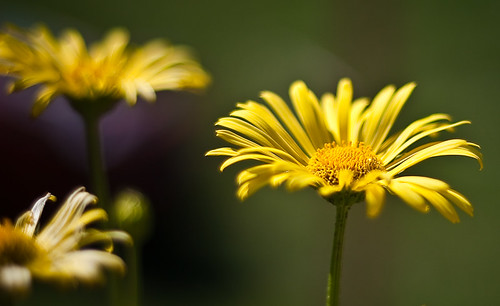
Today's post will also step more into the geeky side of photography, so just be warned, if you're looking for a quick tip. The goal of this post is to lay the foundation for more complex information in the weeks ahead
So far, we've looked at what aperture is, and how it affects the exposure of our shot and the depth of field in our image. Aperture, by far seems to be the most valued element in what photographers call the "exposure triangle". However, there are other elements that also affect our shot and exposure, particularly shutter speed.
A camera's shutter is a mechanism that opens and closes (or electronic that turns on and off, depending on the camera) when the button is pressed on the camera to take a photo. The length of time that the shutter opens or closes can range anywhere from fractions of a second to minutes and even hours. Whenever you take a photo, either you or the camera decides on how long the shutter should remain open.
Generally, when taking photos of of action that you would like to freeze, such as a sports event, you will want the shutter speed to open and close in fractions of a second to capture a sharp image. In other cases, you may want to make the shutter stay open longer to maybe capture a silky image of a waterfall, or create light trails of cars moving at night.The trade off here is light. The quicker that the shutter speed is, the less light gets into the camera. The longer the shutter speed, the more light. So a shot at 1/500 of a second is going to let in less light than a shot at 1/60 of a second.
It is important to keep your eye on the shutter speed at all times in any camera mode. If you have an automatic setting where you allow the camera to control the shutter speed, there may be cases where the camera will slow the shutter down to get you a balanced exposure. The problem here is that if the shutter is too slow, then you will not be able to hold the camera steady enough to keep the image from being blurry. This is the most common problem with people who try to take photos in low light without a flash. The camera tries its best to make sure that your shot has enough light, and in dark rooms, it usually has no other option but to slow down the shutter speed to get it, thus giving you blurry images.
There is a lot more that I could touch on this topic, but for now I just wanted to introduce the shutter and talk about how it affects your shot. In the next post, we will look at the third element that we can use to control light and exposure called ISO.
No comments:
Post a Comment